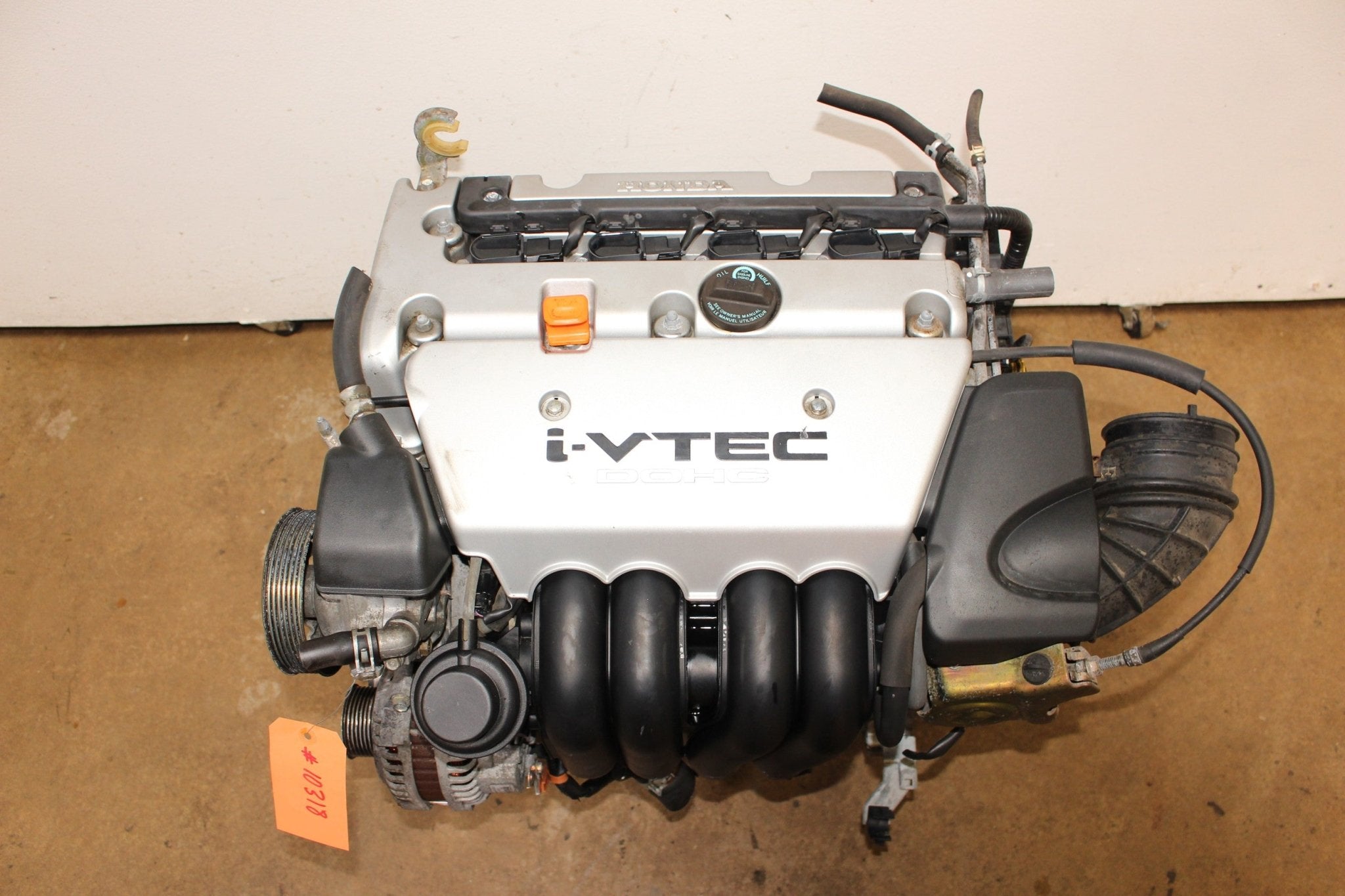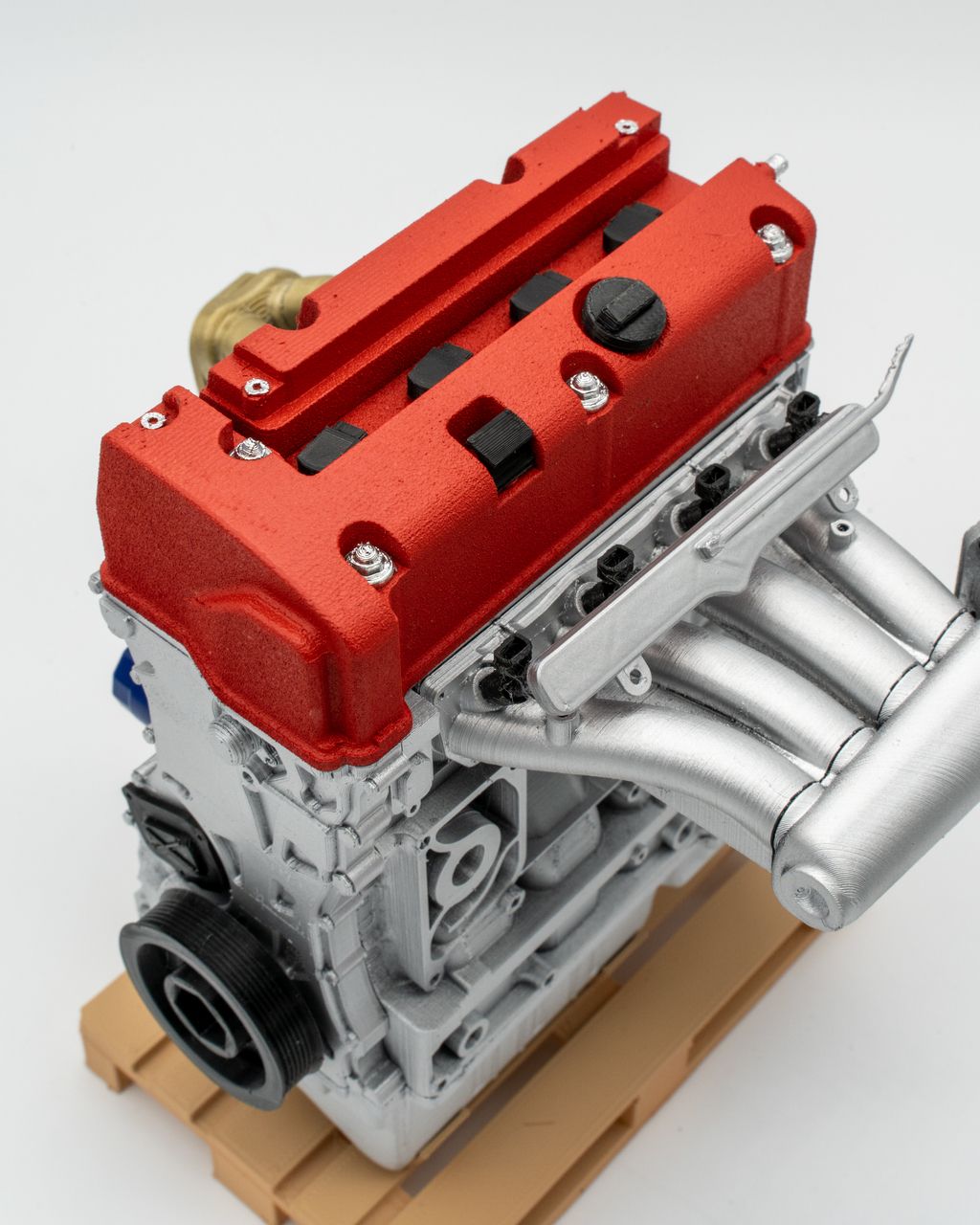Enhance Your Car’s Speed with a Turbocharged K20 Engine Build
Enhance Your Car’s Speed with a Turbocharged K20 Engine Build
Blog Article
Checking Out the Numerous Kinds Of the K20 Engine and Their Special Functions
The K20 engine family, a testimony to Honda's expertise in design, spans a rich scheme of variants, each imbued with special attributes designed to enhance efficiency and efficiency. From the high compression proportion and VTEC system of the K20A Type Engine to the dual-stage consumption manifold of the K20A2, the distinct characteristics of these engines are a wonder to check out. As we venture further right into the complexities of the K20Z1 and K20Z3 variants, the sheer development behind the K20's heritage begins to unfold.
Comprehending the Fundamental Structure of the K20 Engine
The heart of any kind of car, the engine, is a complicated mechanism and the K20 engine is no various. The K20 is an inline four-cylinder engine, renowned for its high revving ability. This fundamental framework furnishes the K20 engine with the convenience to provide exciting performance across numerous driving scenarios.
Exploring the Features of the K20A Type Engine

K20A Engine Performance Specs
While lots of might be familiar with the broad classification of K20 engines, diving much deeper right into the features of the specific K20A type discloses impressive performance specs. The K20A engine additionally features a compression proportion of 11.5:1, which adds to its remarkable fuel effectiveness. A redline of 8000 RPM suggests the engine's high-revving nature, giving drivers with a natural experience.
One-of-a-kind Layout Elements
Digging into the special style elements of the K20A engine reveals a fascinating mix of efficiency and design development. Developed by Honda, the K20A stands out with its i-VTEC system, efficiently combining VTEC and VTC technologies, allowing for optimal power at numerous RPMs. Its portable style, featuring a DOHC format, makes certain peak efficiency while minimizing room and weight. In addition, the engine's light-weight, created poles and pistons add to its high-revving nature. The design additionally incorporates a double-overhead camshaft, boosting gas efficiency and power result. An one-of-a-kind function of the K20A is the square bore and stroke design, stabilizing torque and horsepower delivery. These components, paired with a high compression proportion, offer the K20A its enviable performance attributes.
Upgrading the K20A Engine
After checking out the one-of-a-kind layout aspects of the K20A engine, the possibility for upgrades comes to be a fascinating point of conversation. The K20A, already a high-performance engine renowned for its balance of power and performance, is usually the base for different enhancements. These upgrades generally aim to augment power outcome and enhance handling. Engine tuners often install performance chips, air consumption systems, and exhaust systems to improve horse power and torque. The K20A's robust design and progressed innovation provide a reputable foundation for such modifications. It's essential to make sure that any kind of upgrades maintain the engine's balance and stability. Updating the K20A engine, when done correctly, can dramatically enhance the automobile's efficiency, making it a popular option amongst auto fanatics.
Highlighting the Strengths of the K20A2 Type Engine
The K20A2 kind engine boasts a series of toughness worth see page exploring. From remarkable efficiency aspects to special attributes, this engine establishes itself apart. K20 Engine. Its integrity and effectiveness metrics even more underscore its standing as a leading contender in its course.
K20A2 Engine Efficiency Aspects
While it may be very easy to forget the K20A2 kind engine in the broad variety of K20 engines, it sticks out for its robust efficiency features. This engine variation is lauded for its remarkable horse power, boasting a peak result of 200 HP at 7400 RPM, making it an option for those looking for power and speed. Its high revving nature paired with a 2.0-liter displacement promotes a smooth and exciting driving experience. The K20A2 additionally exhibits solid fuel efficiency, stabilizing performance and economic situation. Its i-VTEC system, a crucial performance element, uses optimized shutoff timing for much better power shipment across the rev variety. Overall, the K20A2's performance facets clearly demonstrate its toughness in the K20 family.
Unique Attributes of K20A2
Despite its seemingly common requirements, the K20A2 engine has one-of-a-kind attributes that accentuate its staminas and distinguish it from other members of the K20 family. This engine version is renowned for its enhanced webcam profiles and greater rev limitation, which provide boosted efficiency and power. These features make the K20A2 a durable and genuinely one-of-a-kind engine.
Integrity and Performance Metrics
Offered its unique features, the K20A2 engine naturally masters both dependability and performance metrics. The engine's dependability is mirrored in its long lasting building and construction and the durability it offers, requiring much less maintenance compared to its equivalents. Its efficiency appears in its high fuel economy and reduced emissions, making it an eco-friendly selection. The K20A2 is furnished with a dual overhead camshaft and a VTEC system, which further boost its efficiency. The engine's small style also contributes to its performance, reducing power loss throughout procedure. The mix of these features makes the K20A2 not just reliable and effective yet also a powerful engine that uses a superior driving experience.

Revealing the Specifics of the K20A3 Kind Engine
The K20A3 type engine, a variant of the K20 collection, holds its one-of-a-kind location in the vehicle globe. This engine is regularly found in base models of Honda's early 2000s lorries, such as the Civic Si and the Acura RSX. This engine additionally boasts a compression proportion of 9.8:1, contributing to its reputable power result.
Discovering the Distinct Qualities of the K20Z1 Type Engine
Usually considered as a peak of Honda's K20 series, the K20Z1 kind engine sets itself apart with its distinctive features. more information Introduced in 2005, this engine variation was created for efficiency and effectiveness, boasting 210 horsepower at 7800 rpm. It is outfitted with a high-flow exhaust system and an upgraded camshaft, boosting its power output. This engine likewise includes an unique i-VTEC system that optimizes both low- and high-rpm efficiency. The K20Z1's compression ratio is evaluated 11:1, making sure optimal fuel effectiveness and power. Its sturdiness is additionally noteworthy, with an enhanced cyndrical tube go to the website block and crankshaft. These functions make the K20Z1 an exceptional engine in the K20 collection, a testament to Honda's innovative engineering.
Looking into the Uniqueness of the K20Z3 Type Engine
Introduced in 2006, the K20Z3 type engine stands as another criteria in Honda's K20 collection, distinctive in its own. The engine's one-of-a-kind i-VTEC system, which incorporates VTEC and VTC innovations, guarantees enhanced fuel efficiency and power output. The engine's chain-driven camshaft, unlike the belt-driven camshafts of its equivalents, provides better durability and maintenance simplicity.
Verdict

The K20 engine family members, a testimony to Honda's expertise in engineering, spans an abundant palette of versions, each imbued with unique features developed to enhance performance and efficiency. K20 Engine. From the high compression ratio and VTEC system of the K20A Type Engine to the dual-stage consumption manifold of the K20A2, the unique qualities of these engines are a wonder to check out.The heart of any kind of vehicle, the engine, is an intricate mechanism and the K20 engine is no various.Transitioning from the standard framework of the K20 engine, the short article currently turns to the functions of the K20A kind engine.While it might be very easy to forget the K20A2 type engine in the wide selection of K20 engines, it stands out for its durable efficiency functions
Report this page